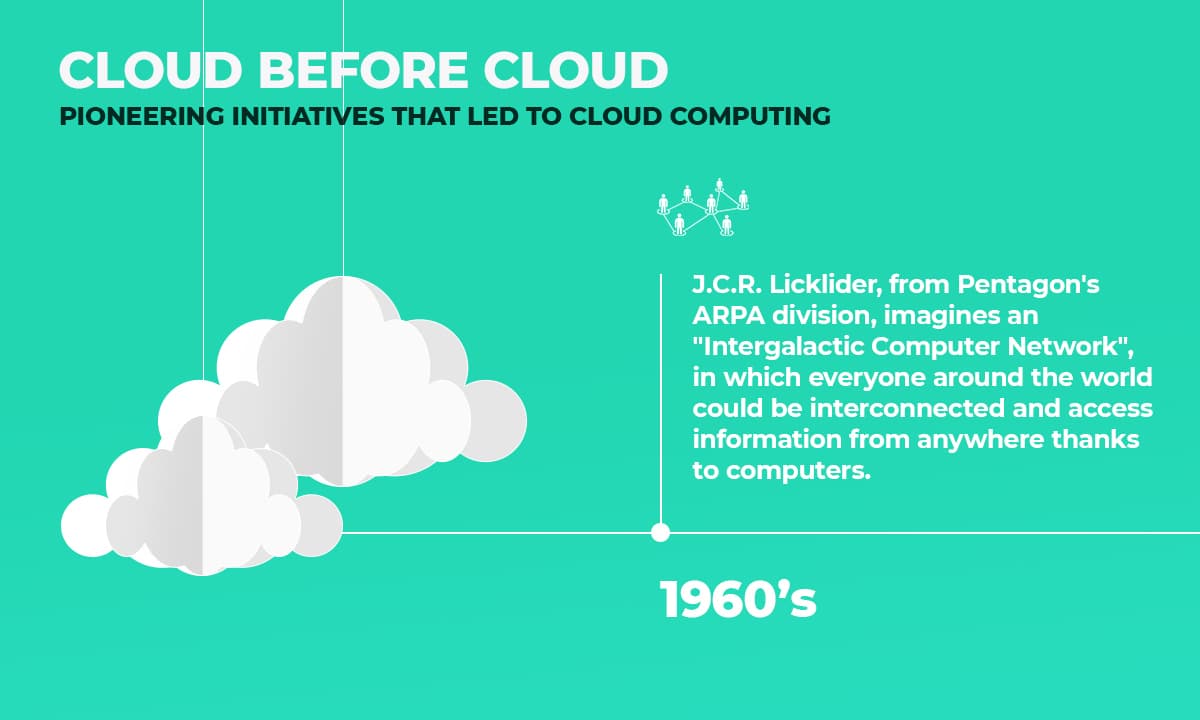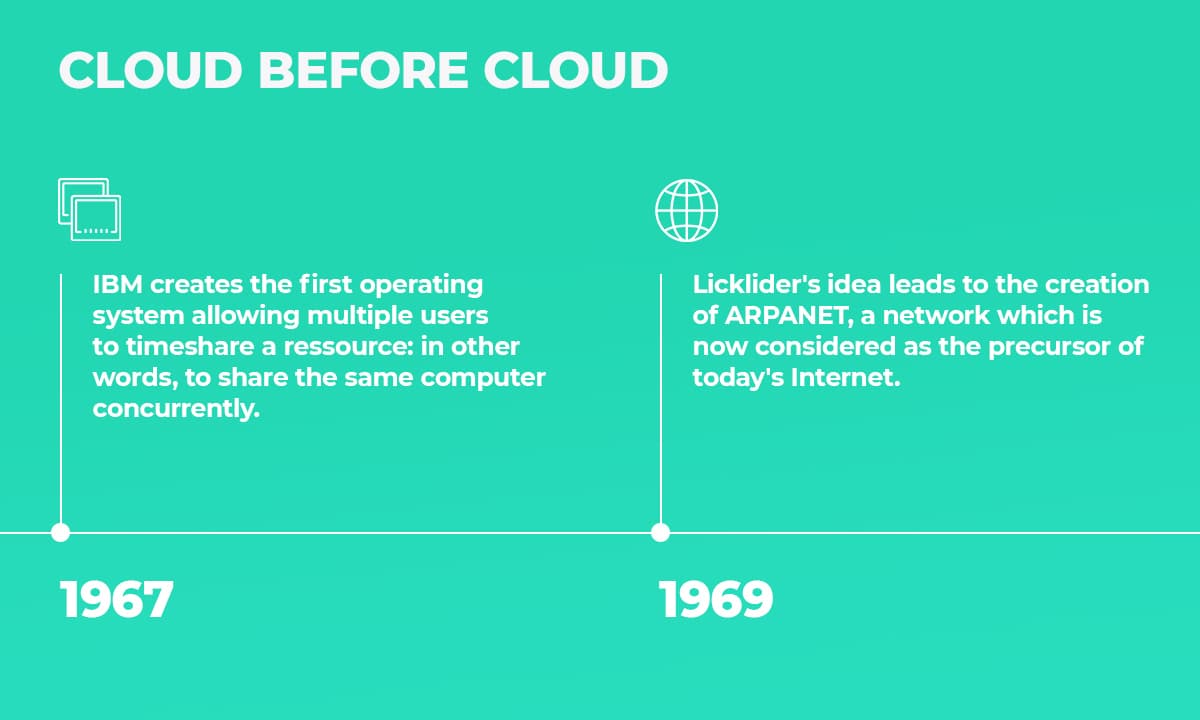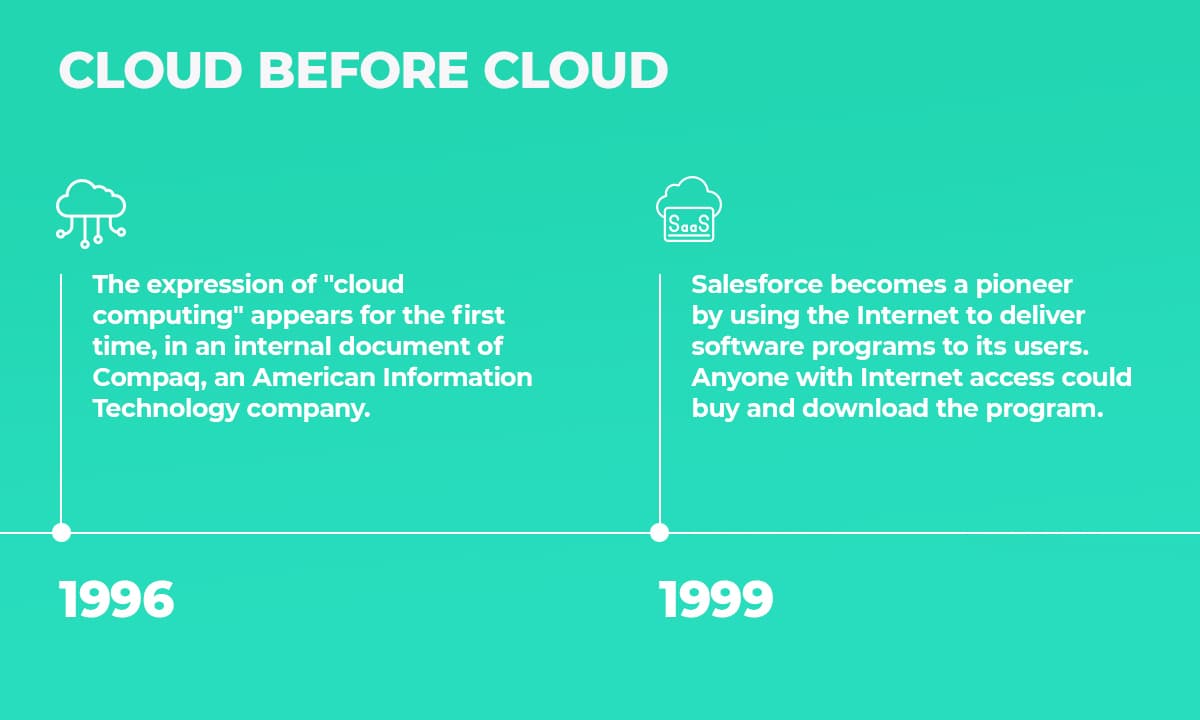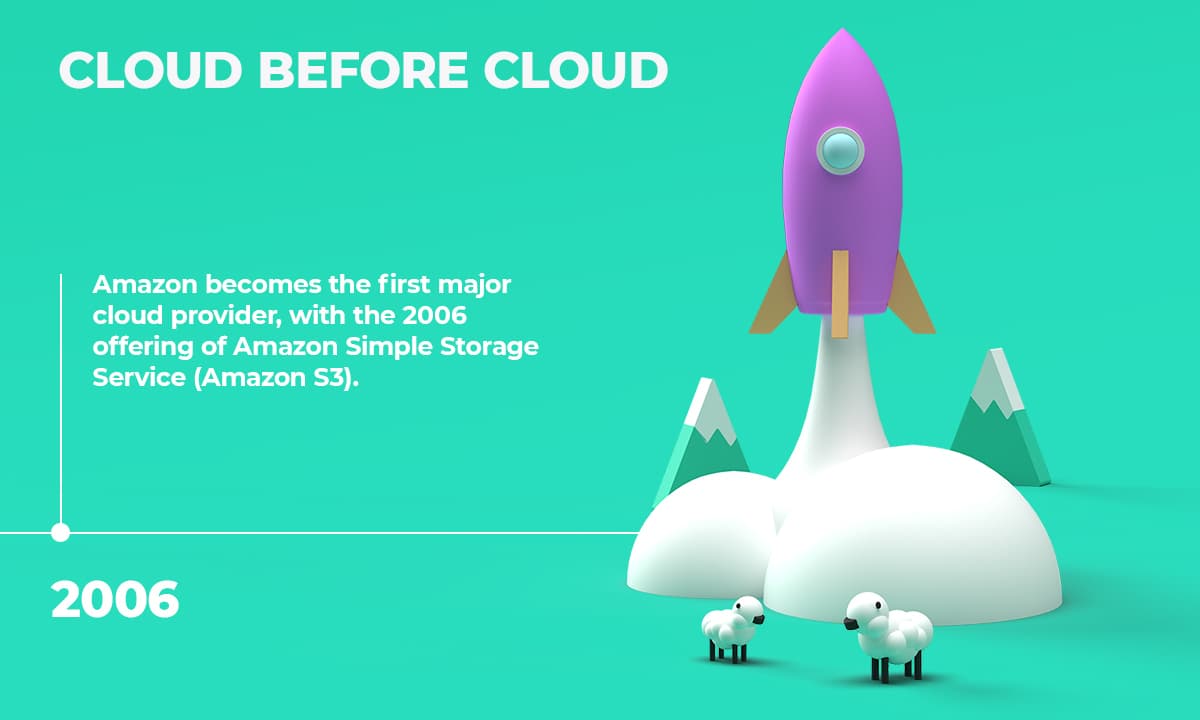Cloud before cloud: a deep dive into the history of cloud computing

In the age of omnipresent cloud-based services, it’s hard to imagine that the mere idea of cloud computing was unthinkable just a few decades ago.
Today, we store our holiday snapshots in the cloud, collaborate simultaneously on documents, watch videos on demand online and connect with people around the world via social networks. Services that rely on cloud technologies are deeply embedded in our lives, both personal (Netflix, Whatsapp, LinkedIn, Instagram, Dropbox, Siri, Gmail, etc.) and professional (Emails, Google Docs/Sheets, Microsoft Office 365, Creative Cloud, Canva, Salesforce, Hubspot, etc.).
But when did cloud computing become “a thing”?
In this article, we’ll walk you through the milestones humanity passed on the way to what is today known as cloud computing.
We’ll cover these chapters:
- Early 1960’s: ARPA & the Intergalactic Computer Network
- 1969: The Internet comes to life
- 1990’s: the term “cloud computing” is coined & SaaS is born
- 2006: First cloud provider launches services
You just have 1 minute? Check out our carrousel for a quick overview:
Early 1960’s: ARPA & the intergalactic computer network
 First computers in the 60's
First computers in the 60's
The kickoff of cloud computing’s history dates back to the early 1960s. Here, various events took place.
- 1961: Professor John McCarthy, during a speech at MIT’s centennial celebration, formulated the idea of selling computing like a utility, as for example gas, electricity or water. This statement is sometimes considered the first definition of what will become cloud computing decades later.
- 1962: Joseph C.R. Licklider, an American computer scientist, worked on a project for ARPANet (Advanced Research Project Agency Network) that was trying to establish connection between people and data all around the world. He pursued a vision of an “intergalactic computer network”, that, in this time, was well out of reach but laid the foundations for the internet.
- 1967: IBM invented the first operating system that allows users to timeshare a resource, e.g. a document. This means that multiple users could share the same computer simultaneously.
1969: The Internet comes to life
In 1968, ARPA commissioned the first routers to be built. A year later, in 1969, two computers (one located at Stanford University and the other at the University of Los Angeles) were connected thanks to the ARPANET. This network is considered the precursor of today’s Internet. A first message was successfully sent from one computer to another on October 29, 1969.
At this time, Licklider was not working at ARPA anymore. Due to his previous work and inspiration, he is considered one of the “fathers” of the Internet.
1990’s: Cloud computing & SaaS are born
The next milestones come more than two decades after the establishment of the internet.
- 1996: The IT company Compaq mentioned “cloud computing” in an internal document, referring to the concept of distributed computing. This is believed to be the very first appearance of the word “cloud computing”.
- 1999: A young company at the time, Salesforce started selling its Customer Relationship Management (CRM) platform over the internet, heralding the age of Software as a Service (SaaS). This choice paid off, as Salesforce is today one of the most valuable companies in the SaaS industry.
2006: First cloud provider launches services
Amazon became the first company to offer cloud services worldwide. Amazon Web Services (AWS) offered virtual computers for rent and allowed people to use their own programs and applications online.
We all know what followed: 2008, Google Cloud was launched. 2009 Alibaba Cloud. 2010 Microsoft Azure. 2011 IBM Cloud. 2013 Tencent Cloud. 2016 Oracle Cloud.
Today, the public cloud market is split up between very few big players, led by (who would have guessed?) the companies that started penetrating the market first. Only four companies share over two thirds of the cloud market in 2022: AWS, Azure, Google Cloud, and Alibaba Cloud make up for 70% of cloud infrastructure in Q2 2022.
The story goes on!
Of course, the birth of cloud computing is not the end of the story.
First, there is still room for innovation to make computing services even more efficient, convenient, and eco-friendly. Indeed, many cloud providers are taking actions to **lower their carbon footprint**and become more sustainable. Edge computing, combined with the cloud, is also an emerging trend in the IT world, as it enables organizations to process data with more speed and scalability.
Moreover, many organizations still need to achieve their cloud transformation, or to modernize their hybrid cloud infrastructure. At Txture, we’re proud to contribute to this global modernization effort by supporting system integrators in their cloud transformation projects all over the world.
Want to learn more about our platform for end-to-end cloud transformation planning? Have a look at our short introduction video!
Seeing is believing!
Get started now - Our team will be happy to give you a first demo and answer your questions about the Txture Platform!
Related posts
14.11.2023Cloud MigrationSecurity risks of cloud computing11.5.2023
Modernization StrategyModernizing legacy IT applications30.3.2023
Cloud Migration Cloud Migration Overview | The 4 Phases & Best Practices6.12.2022
Cloud Target ArchitectureCloud Transformation: how to define the right cloud solution architecture16.11.2022
Cloud AssessmentReady, set, cloud: What is a cloud readiness assessment?




